Over the last two decades, my work as a systems theorist, academic and journalist has frequently anticipated major world events and trends.
Of course, I’ve sometimes got things wrong. But overall, my track record of forecasting has been overwhelmingly accurate.
Over the last 20 years or so, my work has correctly anticipated 20 major events, including the 2001 military intervention in Afghanistan; the 2008 banking collapse; the decline in the rate of global economic growth; the resurgence and mainstreaming of far-right political parties from 2010–2020; the 2018 stock market crash; the 2022 Asian heatwave; and the collapse of the Conservative Party in the UK.
Several people have now asked me to explain how I’ve been so accurate. So this analysis pulls together my reporting and analysis that has been predictive over the last 20 years or so, and highlights where I’ve got it right and the context for that accuracy.
Some of these forecasts were general and did not specify time-scales; some of them were highly specific and included time estimates which turned out to be accurate in precise ways.
How do I do it? I’ve developed a unique holistic systems framework that combines transdisciplinary investigative and collective intelligence methodologies, all applied and refined in many different contexts. This approach has allowed me to anticipate the direction of major world events with a high degree of precision.
Here are my top 20 predictive reports and analyses from 2001 to 2022. Some of them pertain to events or processes that remain in progress:
- Predicted the 2001 US military invasion of Afghanistan six months in advance
- Predicted that the United States would not find weapons of mass destruction in Iraq two years in advance
- Predicted the 2008 banking collapse two years in advance
- Predicted election of Boris Johnson as Mayor of London, and rise of BNP in London
- Predicted the post-2008 ‘end of growth’ in 2010
- Predicted persistence of ‘end of growth’ and slow growth through the twenty-first century in 2013
- Predicted slow-down and peak of shale oil and gas in 2020s ten years in advance
- Predicted victory of far-right political parties across the West from 2010 to 2020, roughly ten years in advance
- Predicted the territorial weakening and break-up of Europe (as well as other large state structures)
- Predicted the exponential disruption of fossil fuel energy by renewable technologies through the 2020s, which would complete between 2030 and 2050
- Predicted the resurgence of global civil unrest after 2017 especially in MENA
- Predicted the failure of the Iraqi state and persistence of insurgency
- Predicted imminent peak of Saudi Arabian oil production in the 2020s and decline in oil exports from 2016
- Predicted escalation of Russia-Ukraine crisis five years in advance of 2014 invasion
- Predicted escalation of Russia-Ukraine conflict again five years in advance of 2022 invasion
- Predicted the 2018 US stock market dive of up to 40%
- Predicted unprecedented drought in Asia in 2022 as trigger for heightened global hunger crisis three years in advance
- Predicted right-wing civil unrest led by Donald Trump in January 2021 to attempt to steal the elections three months in advance
- Predicted the collapse of the Conservative Party three months in advance
- Predicted inflationary global financial crisis risking hyperinflation in the 2020s ten years in advance
Twenty forecasts over twenty years

1. Predicting the 2001 US military invasion of Afghanistan six months in advance
In October 2001, after the 9/11 attacks, the United States led a coalition of Western powers in a military intervention in Afghanistan — ostensibly in response to the terrorist attacks on New York and Washington DC.
I had, however, anticipated the war in Afghanistan six months before it happened, and wrote about mounting evidence of active US military operational preparations for an assault in Afghanistan later that year targeted at Osama bin Laden and toppling the Taliban. My analysis scoped a range of little-known public record sources revealing that in the year 2000, US government officials were meeting actively with their Russian and Indian counterparts to explore “what king of government should replace the Taliban”. Those meetings ramped up in early 2001 into active planning a joint US-Russian operation.
My analysis showed that this was a new shift in American foreign policy, which over the preceding decade had hoped the Taliban might facilitate the establishment of a trans-Afghan pipeline to Central Asian gas resources. By the year 2000, however, it had become clear that the Taliban was not capable of providing the kind of stability required for such a large project needing both political security and economic institutions that could handle and regulate billions of dollars of foreign investment. This is why, as my report explained, the US position had shifted to an anti-Taliban position that was actively preparing for military action to replace the Taliban with a more compliant and stable government.

2. Predicting that the United States would not find weapons of mass destruction in Iraq two years in advance
In March 2003, the United States led a coalition to invade Iraq on the pretext of finding and eliminating Saddam Hussein’s weapons of mass destruction.
But two years earlier, I published an in-depth investigation finding that Iraq did not possess weapons of mass destruction, and anticipating that they would therefore never be found (because they did not exist). I was certainly not the only analyst to have reached this conclusion, and indeed my own analysis cited that of many others, including findings of the UN weapons inspection programme.
My analysis showed, contrary to conventional wisdom, that this was not simply an ‘intelligence failure’, but that “the hypothesis of Saddam’s weapons of mass destruction was deliberately fabricated by the US to justify both a new bombing campaign and the continuation of the UN sanctions regime”.

3. Predicting the 2008 banking collapse two years in advance
In August 2006, I reported that a collapse of the global banking system would take place in 2008 due to a complex convergence of financial and energy crises. My source for this revelation was a sensitive interview with a senior advisor to the US Department of Defense, with extensive access to the US military, intelligence and political establishment. “The source… said that leading US financial analysts privately believe that ‘a collapse of the global banking system is imminent by 2008,’” I wrote at the time.
A tiny minority of analysts had been warning of an imminent global financial crisis, but none had thus far pinpointed the probable date so precisely. My report showed that a peak in conventional oil production would be the underlying driver of the crisis.
Robust economic modelling now confirms that the record oil price spikes that occurred between 2005 and 2008 — themselves triggered by a plateau in conventional oil production and a shift to more expensive unconventional sources — acted as a trigger for the unravelling of unsustainable levels of consumer debt. The price hikes created inflationary pressures across the global economy. With the housing markets overleveraged with mountains of mortgage debt, these sudden inflationary pressures meant that consumers could no longer repay their debts — especially their mortgages. As the defaults accelerated, the housing bubble collapsed and took down the entire banking system with it.
My predictive analysis of a 2008 global banking collapse was published on 31 August 2006, more than a week earlier than famed economist Nouriel ‘Dr Doom’ Roubini made his own celebrated prediction of a looming recession on 7 September 2006 in a presentation at the IMF. While his brilliant analysis conveyed the detailed interactions between oil price hikes and the housing sector, he had not specified — as I had done — that the coming recession with culminate in a total banking collapse.

4. Predicting 2008 election of Boris Johnson as Mayor of London, and rise of BNP in London
On the morning of 1 May 2008, I correctly predicted that Boris Johnson would be successfully elected as Mayor of London later that day. I based my projection on a number of key trends: the rise in sympathy for far-right views; the support for Johnson among the right-wing press and broadcasters; and support for him from the City, London’s financial sector; coupled with the increasing collapse in credibility of New Labour.
I’d also predicted that the BNP would do better than expected in London. In fact, the BNP for the first time passed the 5.3% vote threshold, succeeding in getting Richard Barnbrook elected to the London Assembly.
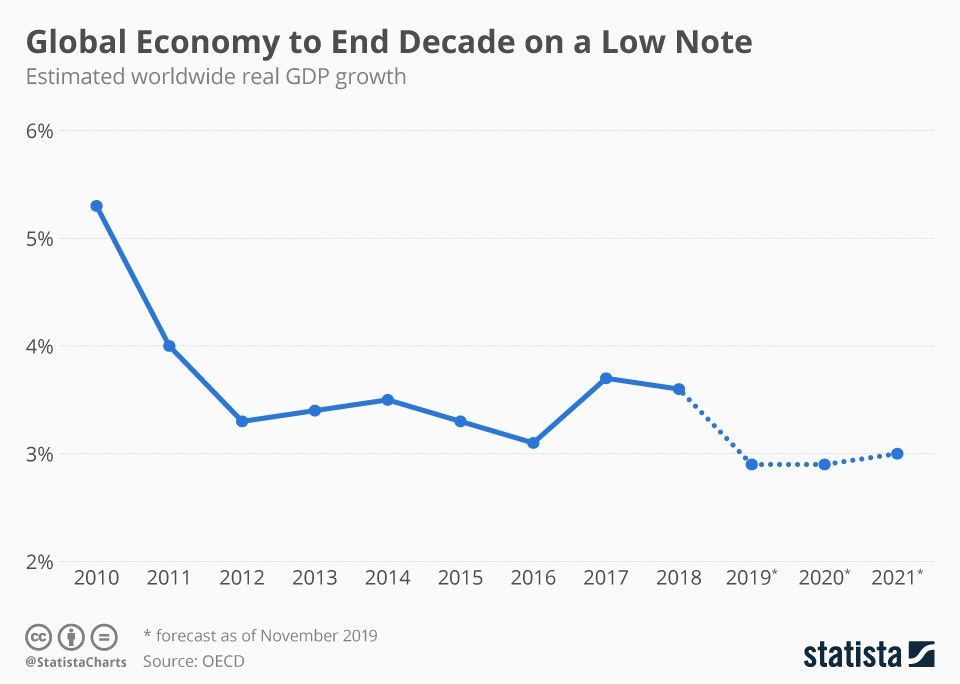
5. Predicting the post-2008 ‘end of growth’ in 2010
I have warned repeatedly that the global financial system would be systemically incapable of returning to previous levels of economic growth, and that the 2008 crisis represented an irreversible ‘tipping point’ in the system.
In 2010, I warned that: “Despite official assurances that the worst is over, that economies are now recovering and re-growing, current trends illustrate that the worst is yet to come — and that policymakers are clueless about the fundamental structural causes of crisis convergence”.
My analysis explained that the dependence on quantitative easing to shore-up structurally insolvent financial institutions and generate asset-price inflation would not eliminate the structural causes of the global financial crash, but simply offset the risks into the future. Since 2008, economic growth has indeed dropped, sharply, plateaued and overall declined, not returning to the levels of growth seen in 2009–2010.
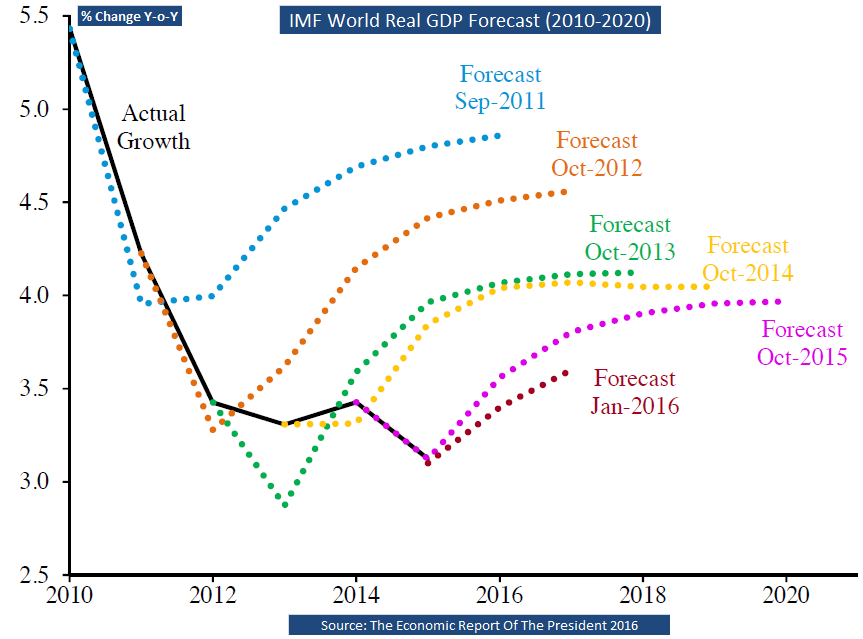
6. Predicting persistence of slow growth through the twenty-first century in 2013
In a 2013 interview, I warned that “Ultimately we’re looking at the 21st century being the age of the end of growth and we have to start thinking about an alternative economic model”.
I did not necessarily rule out the possibility of economic growth in a different economic model, but I made clear that the current global financial model would be unable to return the global economy to previous levels of growth, and this would be a permanent feature of the global financial system without fundamental transformation. My predictions were consistently at odds with those of the major financial institutions. But I was right, and they were wrong:
“We’ve also seen persistence in the decline of growth. Since 2008 we just haven’t been able to catch up with growth, and in fact the IMF and the World Bank have just slashed their growth forecasts again because we don’t seem to be catching up in time. China is slowing down, India is slowing down. All of this is happening in ways that economists last year were being very bullish about but going against their forecasts and against their models.”
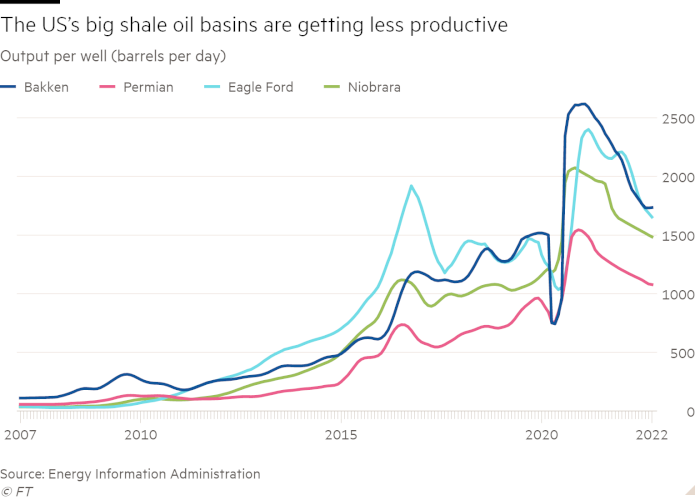
7. Predicting bankruptcies in shale oil and gas sector six years in advance, as well as 2020s slow-down of production ten years in advance
In 2012, I warned that the US shale industries could face mass bankruptcies due to dodgy economics, large debt and drilling challenges: “So the shale gas revolution will not usher in a new heyday of clean, cheap oil — but it will accelerate debt instabilities in the oil industry that might blow up in our faces”.
I warned in 2013 that shale gas could really just be a Ponzi scheme and that its production peak would come sometime between 2015 and 2025. In 2017, writing in my Failing States, Collapsing Systems study, I pinpointed data indicating that both shale oil and gas would probably peak around 2025.
At the time, such warnings were laughed at and seen as ‘doom-mongering’. But it wasn’t long before this warning transpired. Around 2018, the uptick in bankruptcies in the US shale sector began to make headlines. Over the next few years, hundreds of oil companies went bankrupt. Bankruptcies have slowed as high oil prices have generated record profits, helping shale companies repay their debts.
But as a recent Financial Times piece confirms, despite massive demand due to the gas crisis, productivity per well is plunging while the number of operating rigs has stalled — US oil and gas executives say that even in this environment, they cannot lift production significantly. Now experts expect shale oil to peak around 2024 and shale gas to begin declining around 2023.

8. Predicting victory of far-right political parties across the West from 2010 to 2020, roughly ten years in advance
In 2010, I predicted that liberal democracies were about to face a wave of far-right resurgence over the next 5–10 years, and that this would be especially visible in the UK.
I predicted that “the entire mainstream party-political system in this country [Britain]” would end-up being “completely discredited” due to inability to deal with the structural causes of escalating economic crises “while mainstream policy solutions serve largely to contribute to them, not ameliorate them”. I also warned: “The collapse of the mainstream party-political system across the liberal democratic heartlands could pave the way for the increasing legitimization of far-right politics by the end of this decade in the context of massive structurally-generated resources scarcities.”
This prediction has been borne out dramatically. Between 2010 and 2020, the rise and legitimisation of far-right politics in liberal democracies has grown rapidly. This has included major political victories across the US, UK and Europe. In the same period in the UK, every single major party has now experienced major discrediting and crisis. In particular, ‘cultural populism’ which focuses on privileging nativism and emphasising race, ethnicity, religion and/or identity has rocketed up exponentially over this decade.
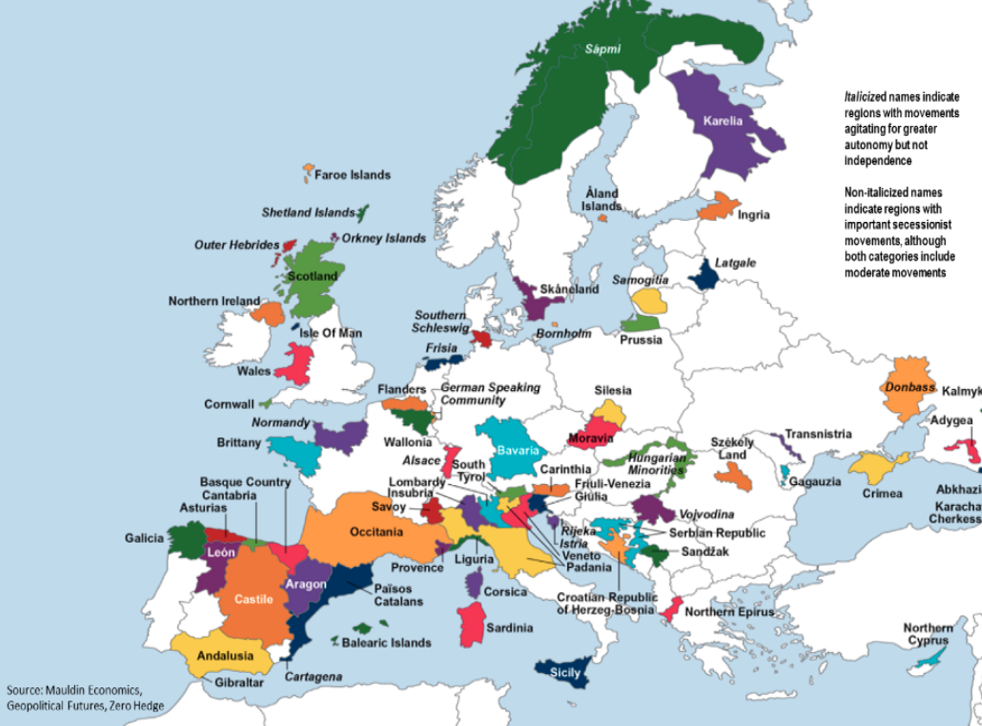
9. Predicting the likely break-up of Europe (and potentially other large state structures)
In my 2010 book, A User’s Guide to the Crisis of Civilization: And How to Save It, I warned that the European Union was at risk of breaking-up due to being unable to respond to converging, complex economic, energy and ecological crises, which would drive up Otherisation. I wrote that this would also affect other major state structures. I wrote that “large state structures like the US, Russia, China and the EU will find it increasingly difficult to sustain their internal territorial integrity, facing rising demands for autonomy by different political and national groups within their borders”.
Where I was wrong, was in anticipating that these processes would kick-off toward the middle of the century. In reality, they began with the break-up of Europe via Brexit comprising a major tipping point. And they are rapidly creeping-up elsewhere. In the United States, 37 percent of people polled in 2022 wanted their state to secede from the US. Support was especially high among southern Republicans, 66% of whom were pro-secession. The process has already started as signalled by the overturning of Roe vs Wade, throwing abortion rights back to state authorities rather than federal law. Separatist movements are on the rise across Russia, especially in Siberia. Experts are now warning of the Russian Federation potentially collapsing. China is facing growing separatist movements from Xinjiang, Tibet, Hong Kong, and Taiwan.
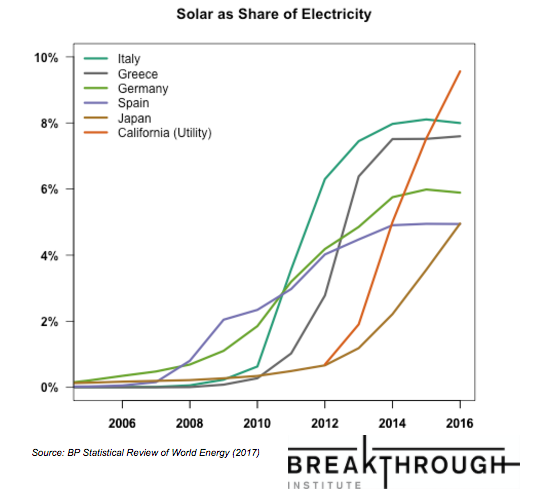
10. Predicting the exponential disruption of fossil fuel energy by renewables through the 2020s, which would complete between 2030 and 2050
In 2014, and again in 2017, I forecasted that fossil fuels were on their way to becoming “extinct” due to renewable technology disruptions in the energy sector led by solar. My forecast was based on my analysis of a range of sources from the work of RethinkX (where I was recently Director of Global Research Communications) to a number of other models. I concluded that exponential cost declines and performance improvements would drive exponential adoption rates due to economic factors that simply make these technologies more competitive than incumbent oil, gas and coal industries, within 12–32 years.
This is, fundamentally, an economic disruption, I argued, occurring without government intervention and in spite of regulatory barriers. In short, the disruption can be delayed but, I predicted, it cannot be stopped. It creates a growing risk of fossil fuel stranded assets — assets where investments will not make their hoped-for returns because their real value is far lower than conventionally recognised.
Since my forecast, the contours of the energy disruption have confirmed the accuracy of this prediction. Solar, wind and batteries have continued to experience dramatic cost reductions and are now up to nine times cheaper than conventional power plants. In 2022, Oxford University published a study confirming this forecast. It found that renewables will become cheaper than fossil fuels across all applications in coming years, and that we can accelerate this so that it gets cheaper even faster.

11. Predicting the resurgence of global civil unrest after 2017 especially in MENA
In my book Failing States, Collapsing Systems, I documented a rising trend of civil unrest around the world since the 1970s, and forecast that this trend would continue from 2017 onwards due to a combination of factors — the decline in global energy return on investment of fossil fuels; the decline in the rate of economic growth; the rise in ecological costs and growing inability of states to deliver affordable public goods and services; and the growing disillusionment with mainstream norms, values and political orders that this would entail.
I forecast that the type of unrest seen during the 2011 Arab Spring would not disappear, but would become a more permanent feature of the international system. In particular, I claimed that the period between 2020 and 2030 would see the Middle East and North Africa experience a resurgence of civil unrest due to food crises linked to energy.
As I’d foreseen, from 2018 to 2022 and continuing, the MENA region has indeed experienced a ‘second wave’ Arab Spring.

12. Predicting the failure of the Iraqi state and persistence of insurgency
I forecast in 2017 that Iraq would experience the beginnings of state-failure in 2025, accelerating out to full-blown collapse by 2040 due to the continuation of Islamist insurgency, as well as the inability of the political framework to accommodate sectarian tensions, tendencies which would eventually hit the ceiling of energy and economic problems.
I warned that after 2025, state revenues would decline due to oil industry challenges. After this, I wrote: “It will only be a matter of time, in this context, before the state — without identifying a new and sustainable source of income — will be forced to retract. In this scenario, we may see the central government increasingly unable to maintain basic social expenditures, which are already deeply strained. On a business-as-usual trajectory, Iraq as we know it is headed for full-blown systemic state failure by approximately 2040”.
As I’d expected, Iraq has in the 2020s struggled to continue expanding its oil production due to inadequate investment and is unlikely to be able to lift production much further, even though the oil price spikes have granted it a massive but temporary revenue hike. It is now widely recognised that Iraq is a “failed state”. Experts warn this year that the Iraqi state is on the brink of collapse.

13. Predicting imminent peak of Saudi Arabian oil production in the 2020s and decline in oil exports from 2016
I warned in 2016 that Saudi Arabia was on the brink of experiencing a peak in its oil production, and that according to some studies this would happen by the late 2020s, followed by a gradual plateauing and decline of production. I also warned that on average, Saudi Arabia would experience a decline in net oil exports over time indicating this looming energy challenge.
While exports have fluctuated year-on-year, net crude oil exports have declined quite dramatically and consistently since my 2016 report, from 7.4 mbd to 6.2mbd in 2021/22. It’s not clear how close the kingdom is to peak oil, but since 2016, its oil production has also declined year-on-year from 12.4 mbd to 10.9 mbd in 2021/22. Insiders suggest that Saudi oil production is already straining available capacity.
In other words, the situation is playing out exactly as I’d warned — in fact it’s happening faster than I’d anticipated.

14. Predicting escalation of Russia-Ukraine crisis five years in advance of 2014 invasion
In 2009, I warned of an escalation in geopolitical crisis facing Russia, Ukraine and the European Union due to growing competition over gas transit routes and resources. The price dispute that year, I wrote, signalled “the eruption of a major fault-line in future EU-US-Russian geopolitical contestation in the region for claims over access to increasingly scarce hydrocarbon resources”. I cited evidence showing that over the coming two decades, Gazprom would face increasing supply challenges due to ongoing depletion that Russia’s own energy ministry was monitoring.
The price dispute and temporary shut-down by Russia of a gas transit route for a fifth of Europe’s gas was “a sign of things to come if Europe doesn’t act to overcome its over-dependence on hydrocarbon energy sources”, I warned. Five years later, Russia invaded Ukraine and annexed the Crimea.

15. Predicting escalation of Russia-Ukraine conflict again five years in advance
In Failing States, Collapsing Systems (2017), I predicted that the Russia-Ukraine conflict begun in 2014 was likely to intensify in the context of the probability of Russian oil and gas production depletion in the 2020s, expected by Russia’s own internal energy assessments. Once again, I pinpointed the role of competition over gas transit routes. State failures and conflicts seen in the periphery of the world system like Syria would end up coming home to “the Euro-Atlantic core”, I wrote.
In 2022, five years later, protracted war broke out in Europe for the first time since the collapse of Yugoslavia with Russia’s full-blown invasion of Ukraine.

16. Predicting 2018 US stock market dive
In February 2018, I warned correctly that the US stock market would collapse by up to 50% later in the year. I cited little-known analysis from a meeting of City of London financiers.
By December, the US stock market experienced its worse crash in a decade. The Dow Jones Industrial Average dropped by 34%, and the Nasdaq Composite dropped by 40%.

17. Predicting unprecedented drought in Asia in 2022 as trigger for heightened global hunger crisis three years in advance
In 2019, I wrote an extensive analysis of climate modelling studies of the complex interaction between global warming, extreme weather events and the impact on major food basket regions.
I warned that Asia and especially South Asia would face heightened risk of major prolonged droughts and heatwaves after 2022. My analysis showed that after the early 2020s, droughts across Asia would last on average longer than three months and become more than twice as severe, affecting India the most — along with China, Pakistan and Turkey. I wrote that “the risk of climate-induced droughts in parts of Asia triggering a global food crisis could start to become acute as early as 2022”.
This is precisely what occurred. The 2022 heatwave whipsawed across Asia, including India, Pakistan as well as China and Turkey. Observers described it as “mind-boggling” in its scale and intensity, with more than a billion people in India and Pakistan enduring daytime highs of 40°C. In some areas, people experience 50°C temperatures — the temperature at which the body begins to cook.

18. Predicting right-wing civil unrest led by Donald Trump in January 2021 to attempt to steal the elections three months in advance
In November 2020, I wrote a detailed analysis of the efforts of Republican Party officials including Donald Trump to steal the US elections through false voter fraud claims. I warned specifically that Trump was deliberately trying to stir-up civil unrest to trigger a constitutional crisis in January.
I wrote: “As unlikely as all this might be, Trump is actively attempting to make it more likely by whipping the US public into a frenzy, as evidenced by his baseless vote fraud claims topping the social media charts on Facebook on YouTube. His plan is to extend and intensify this frenzy all the way through to January, to create a constitutional crisis and a breakdown in the military chain of command amidst state legislature power grabs”.
The 6 January riots on Capitol Hill were precisely a frenzy of angry pro-Trump citizens. We now know that Trump himself and his top officials were intimately linked to many of the ringleaders of the riots, and saw them as an opportunity to attempt to overturn the election results.

19. Predicting the collapse of the Conservative Party three months in advance
On 7 July 2022, I predicted that the Conservative Party was on the brink of collapse. I wrote that the Party had hit “peak politics”, involving “the greater unravelling of the entire Conservative project as it has developed over the past decade, and in which Johnson himself — and the acolytes around him who have now suddenly abandoned him in his hour of need — played an instrumental role.”
I forecast that: “British Conservativism is about to enter an amplifying feedback loop of chaotic decline, none of which is likely to inspire confidence in voters”. The “next few months” would consist of “accelerating chaos”.
As I’d warned, the Tory Party’s selection of the Truss government and the transition to Rishi Sunak’s administration expressed this accelerating chaos in surprising ways, including a breakdown of process in parliament over a vote. As a result, the Conservative Party haemorrhaged in the polls, leaving Labour with a massive lead that pointed to a total wipe-out of the Tories as a meaningful political force. Sunak’s replacement of Truss has helped bump the Tories up a bit, but a third of Tory voters have said they wouldn’t back him in a general election.

20. Predicting inflationary global financial crisis risking hyperinflation in the 2020s ten years in advance
In my book, A User’s Guide to the Crisis of Civilization (2010), I warned that the conventional neoliberal economic policies of quantitative easing, continued fossil fuel exploitation, along with the ongoing privatisation of public assets and rampant market deregulation, were the key ingredients that would lead to a new global financial crisis and oil supply crunch “in the next 5–10 years” — that is, by around 2020.
I cited evidence that the economy was experiencing a “systemic solvency crisis” that risked a “hyperinflationary great depression”. I warned of a dramatic slump in global demand due to the 2008 crash, which would prolong the duration of fossil fuel exploitation and allow prices to fall. The flooding of credit into world markets due to quantitative easing would then “encourage increased spending, bringing consumption levels up and contributing to a temporary economic recovery”. But this would ultimately be debt-based and inflationary, and generate “an unavoidable oil supply crunch”.
In a separate 2010 article summarising some of these themes, I warned that this could culminate in “another financial collapse, triggering a dive into deep depression, driven by hyperinflation and devaluation”.
The forecast placing this around 2020 was a few years off, but was accurate in terms of the system dynamics, and that this would likely reach fruition in about a decade. The contours of this crisis are now unfolding as I write. One of the world’s most respected hedge funds, Elliott Management, has warned in November that the global economy is currently heading toward hyperinflation leading to outcomes that “would be at or beyond the boundaries of the entire post-WWII period”, including the risk of triggering “global societal collapse”.
Mistakes
Of course, I’ve made mistakes too. Recognising where and why forecasting mistakes are made is a key part of improving your methodology by understanding where you went wrong.
For instance, in 2015 I claimed that ISIS would become stronger and stronger. This was a linear extrapolation from events at the time that did not bear out, as ISIS did in fact experience a severe military defeat. While my wider claim that ISIS would be undefeated and their insurgency would continue has been borne out, this specific claim was wrong. This was because I allowed my own personal bias to interfere with my analysis.
Another example is from 2016, when I predicted that a global financial crisis would hit in 2018, along with a resurgence of oil and food inflation. In fact, the broad systemic contours of my forecast were correct, but I was off by four years; my more recent prediction departed from my previous 2010 prediction pointing to a 2020 crisis. In this case, my mistake was to have underestimated the stabilising forces in the global system — I had also not expected a global pandemic which further dampened some of the structural factors I was examining, while accelerating others. These forces came into play later, and were eventually amplified by Russia’s invasion of Ukraine, setting the groundwork for the onset of a global energy, economic and food crisis around 2022 onwards.

Methods
These articles above were not always strict forecasts. Often, they were the result of predictive implications of analyses based on collating and interpreting multiple different sources. Sometimes they were my own verdict; other times, a particular source or set of sources properly analysed and contexualised was the basis of the prescience.
The predictions were also of different types and qualities, some being highly specific even including precise time-frames along with a sense of probabilities, while others were more vague and open to interpretation, or implicit in the analysis.
In any case, all of my articles referenced above had a prescient or predictive quality indicating that the framework I’ve used and refined over the last two decades is able to generate reliable forecasts when applied to particular questions and developments. So what is this framework? While it’s impossible to elaborate on that here in sufficient depth, below is a summary of its key components.
Open inquiry
One of the most powerful methods I use is a type of ‘open inquiry’ approach that was especially developed and applied at my investigative journalism venture, INSURGE INTELLIGENCE. This combines collective intelligence methods designed to track data and analysis across multiple sectors, disciplines and ideological perspectives premised on a systems framework.
Horizon scanning
Conventional ‘horizon scanning’ approaches attempt to systematically investigate evidence of future trends based on accumulating and examining information from research publications, quantitative data, news outlets, social media, and so on. This is a form of ‘open source intelligence’.
However, conventional horizon scanning does not operate from a systems perspective and therefore is unable to do much more than project forward current trends into the future in a linear fashion. It is also dependent on traditional sources of information which are often subject to mainstream, silo-ed biases and narrow thinking. Finally, it is usually executed without overarching systems-ground methodological frameworks and this can often allow cognitive biases and underlying theoretical assumptions to sway the analysis. To be effective, horizon scanning needs to use a collective intelligence approach combined with whole systems analysis.
Cultivating impeccable expert and insider sources
I overcome the limitations of conventional horizon scanning using investigative journalism techniques designed to cultivate a network of expert and insider sources across sectors, structures and disciplines. These sources often have detailed insights on the inside of key systems that are unavailable to more conventional mainstream sources. However, one also needs to sense-check these sources against a clear-sighted understanding of how wider systems work.
Transdisciplinary research
I use a holistic transdisciplinary research approach that combines and integrates a range of academic methodologies from different key disciplines across what might be seen as foundational sectors and trends in earth and human systems, namely climate, environment, energy, transport, food, economy, geography, conflict, and terrorism. This is not just a form of data collection, but requires using the correct analytical methodologies in each domain (e.g. to understand the workings of oil production in energy; or of market risks in the economy); as well as a theoretical mechanism to recognise the interconnections across these different domains and how they are structured.
Systems framework
A proven and applied whole systems framework is needed to situate and contextualise the data being assessed. This means understanding the specific nonlinear dynamics of various systems within the human system, within earth systems, and how these different systems interconnect within a whole system, encompassing multiple systems frameworks understood through a coherent higher-order framework. Although this sounds incredibly complex — and it does involve many layers of complexity — understanding through a systems lens reveals a simple core set of principles and patterns by which events can be understood, and forecasted. The two books where I’ve elaborated core element of my systems framework are A User’s Guide to the Crisis of Civilization and Failing States, Collapsing Systems.
It’s not enough just to accumulate data and try to keep track of ‘trends’. That approach for the most part only works when it identifies linear processes that can be extrapolated reliably in simple, stable systems in equilibrium; it cannot work in situations of rapid change, complexity, multiple interacting systems, or systems in transition or transformation. If you can’t understand the system, your forecasts will be deeply flawed. In short, anticipating the future requires the right set of sources, lenses and tools, in order to recognise how the system is actually working.








